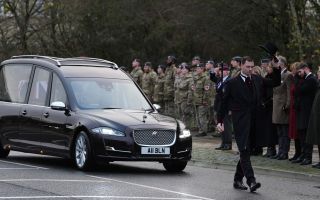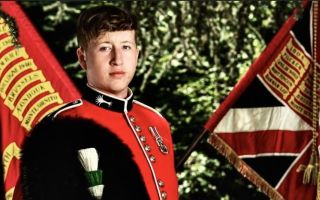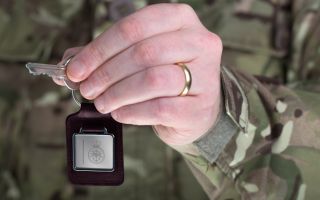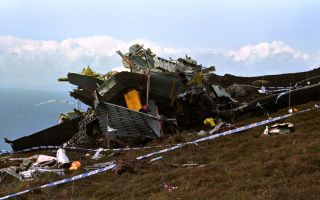Tri-Service
Admiral Kuznetsov: Everything You Need To Know
Russia has launched airstrikes in Syria from the aircraft carrier Admiral Kuznetsov for the first time (see above).
The flagship of the Russian Navy and its only aircraft carrier, the smoke-belching beast was originally commissioned in the Soviet Navy in 1990.
It comes as the country releases footage of it firing Kalibr and Onyx cruise missiles at targets in Syria.
Kuznetsov is currently deployed off the Syrian coast, after being monitored by Royal Navy vessels through the English Channel.
Forces TV has taken a look at her capabilities...
In Numbers:
- Weighing in at 61,390 tons (when carrying a full load), she's over 1,000 feet (305m) long overall and can carry 41 aircraft.
- Her teeth are, without doubt, her fighter jets. Traditionally, this has been 12 SU-33s. With a range of 1,864 miles (3,000 km), these carry 30mm cannons, air-to-air and anti-ship missiles, as well as various bombs and rockets. With the flotilla currently so close it can be seen from The White Cliffs of Dover, Britain would (theoretically) be well within range.
- Kuznetsov can also carry 5 4 Su-25UTG/UBP trainer aircraft, as well as 24 Kamov Ka-27 anti-submarine helicopters. She's also expected to be testing up to 20 MiG-29K/KUB fighters in this deployment, as well as Ka-52K Katran helicopters and new X-38 missiles - flying from the carrier for the first time.
An Su-33 on board Admiral Kuznetsov in 1996 (left); a MiG-29K and its armaments (right - the folded wings maximise the limited space available on a carrier)
- Her own defences aren't too shabby either. She carries six 30mm guns, which can each fire 6,000 rounds/minute, anti-aircraft guns and missiles (she can fire 192 missiles at a rate of one every three seconds), long-range anti-ship cruise missiles and rockets.
The Downsides:
- Unlike Western carriers, Kuznetsov doesn't have a catapult system. She relies on a ski-jump at the end of the deck to get planes airborne. This greatly limits aircraft payload, as fully-loaded jets can't accelerate above stall speed with too heavy a load. Kuznetsov's planes, therefore, take off with a light payload of air-to-air missiles.
Kuznetsov's deck configuration has three launch positions for fixed-wing aircraft (picture: Anynobody)
- Also, perhaps unsurprisingly given her age, the carrier just isn't quite as modern as those created since by other nations. The US' most recently-commissioned carrier, USS George H.W. Bush, can carry 90 fixed wing aircraft and helicopters for example - and the US has 10 carriers to Russia's one. Britain's two new aircraft carriers, HMS Queen Elizabeth and HMS Prince of Wales, meanwhile, will be able to carry tailored groups of up to 40 aircraft each, including the more modern F-35B Lightning IIs (compared to Kuznetsov's aircraft), as well as Merlin, Wildcat, Chinook and Apache helicopters. They're not expected to be in service until next year (Queen Elizabeth) and 2020 (Prince of Wales) though.
- Russia's hampered by the fact that following the 1991 collapse of the Soviet Union, it lost access to the Nikolayev shipyards in Ukraine, which had built every one of its previous aircraft carriers. For this reason, it's had to reconstruct its aircraft carrier building industry within its current borders. It's now hoping, however, to be able to build new carriers domestically as soon as 2019.
Kuznetsov and the other Russian vessels have been shadowed by the Royal Navy this week as they passed through the Dover Strait - one of the busiest seaways in the world.
Type 45 destroyer HMS Duncan sailed from Portsmouth on Tuesday to "man mark" the group, and Type 23 frigate HMS Richmond escorted the group from the Norwegian Sea as it moved south.
The Royal Navy's monitoring of the Russian flotilla coincided with Trafalgar Day, the day when Britain triumphed in the Battle of Trafalgar on October 21 1805.
NATO said the prospect of Russia's only aircraft carrier heading to the region does not "inspire confidence" that Moscow is seeking a political solution to the Syrian crisis.
A statement from the fleet to the Russian news agency Tass last week said the group also consisted of the Pyotr Velikiy battlecruiser, the Severomorsk anti-submarine ship, the Vice-Admiral Kulakov destroyer and other support vessels.












